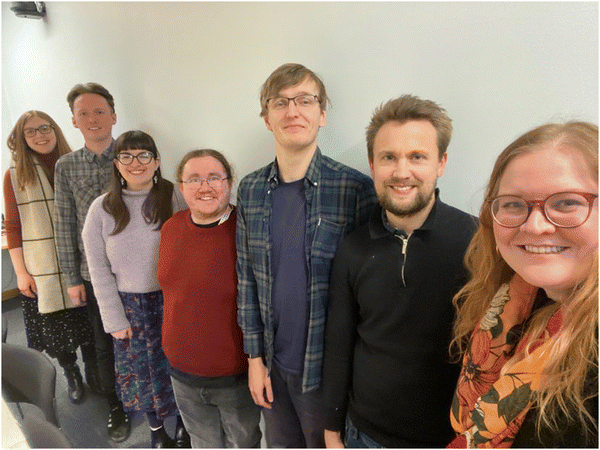 Open Access Article
Open Access ArticleCreative Commons Attribution 3.0 Unported Licence
Energy Advances: advancing energy research and technology for one year
Volker
Presser

Editor-in-Chief, Energy Advances, Royal Society of Chemistry, UK
1. Introduction
As Energy Advances saw the light of day, I wrote the first editorial about the magic within new beginnings. Now, Energy Advances has turned one year old, and I still feel the magic.As the Royal Society of Chemistry has pledged to undergo a transformative transformation towards 100% open access, it is a privilege to be Editor-in-Chief of an already open-access journal! Open access is only part of the transformative power unfolded by open science. It is not a self-serving purpose and not without many challenges. This mainly pertains to keeping open access truly open. Article processing charges remain a challenge, and novel forms, like national or institutional agreements with publishers, and support directly from funding agencies, address this issue. But the road toward fair and inclusive open access is still very long.
I strongly believe in the need for open, transparent, and fair access to knowledge to enable humankind to tackle the tremendous challenges of tomorrow. Open science is the gateway toward what the German philosopher Gottfried Leibniz called “the best of all possible worlds”. But open access and open science, more than ever, need safeguards. This mainly pertains to proper peer review, and I am excited to see transparent review becoming a more common practice. Science is all about communication, exchanging ideas, and being one another’s best critic. However, science is not about “finding mistakes”, but inviting others to “prove me wrong”. Kindness in science is not to be shy about engaging in a scientific discourse, but not to forget to dispense “constructive” criticism. Anonymous peer review helps the reviewers about the former, but the latter is equally important. Transparent peer review may also be a positive element toward sustainable and fair peer review.
2. Our team
Science is made by humans for humans. Well, sometimes, with some help from artificial intelligence. But our journal would be nowhere without a fantastic team of people and their positive energy. We are grateful to have as Associate Editors (in alphabetical order) Guang Feng (Huazhong University of Science and Technology, China), Anita Ho-Baillie (University of Sydney, Australia), You Han (Tianjin University, China), B. Layla Mehdi (University of Liverpool, UK), Michael Naguib (Tulane University, USA), and Matthew Suss (Israel Institute of Technology, Israel). Their expertise and rich experience from various fields of energy research is indispensable for our selection process of reviewers and manuscripts (Fig. 1). Among other recognitions, I am very happy to see Michael Naguib receive the 2022 InfoMat Junior Researcher Award, and three board members (Michael Naguib, Anita Ho-Baillie, and myself) being listed as Highly Cited Researchers (Clarivate). I strongly believe that scientific journals mandate a strong team of scientifically active scientists.The yin to the Editorial Board’s yang is the Editorial Office (Fig. 2). Without their proficiency and constant support, our journal would be an idea and nothing more. It is a privilege to work with Emma Eley (Executive Editor), Jon Ferrier (Deputy Editor), Sarah Whitbread (Editorial Production Manager), Aphra Murray (Assistant Editor), Jamie Purcell (Assistant Editor), Sarah Holmes (Assistant Editor), Alexander John (Assistant Editor), Lee Colwill (Publishing Assistant), Alex Holiday (Editorial Assistant) and Neil Hammond (Publisher). Your contributions are sometimes difficult to see because everything goes smoothly if you do your job right. And the absence of issues is often ever too easy to overlook. But we, and the authors, see you and your contributions very clearly.
And we are very grateful to have an inspiring list of esteemed colleagues serving on our advisory board: Sarbajit Banerjee (Texas A&M University, USA), Graeme Cooke (University of Glasgow, UK), Benjamin Dietzek (Friedrich Schiller University Jena, Germany), Liming Ding (National Center for Nanoscience and Technology, China), Baizeng Fang (The University of British Columbia, Canada), Shaojun Guo (Peking University, China), Kui Jiao (Tianjin University, China), Yan Lu (Helmholtz-Zentrum Berlin für Materialien und Energie GmbH, Germany), Heather MacLean (University of Toronto, Canada), Hoi Ri Moon (Ulsan National Institute of Science and Technology, Korea), Thuc-Quyen Nguyen (University of California, Santa Barbara, USA), Kenneth Ozoemena (University of the Witwatersrand, South Africa), Kristin Persson (University of California, USA, and Lawrence Berkeley National Laboratory, USA), Jenny Pringle (Deakin University, Australia), Jürgen Steimle (Universität des Saarlandes, Germany), Valeska Ting (University of Bristol, UK), Ajayan Vinu (The University of Newcastle, Australia), Naoaki Yabuuchi (Yokohama National University, Japan), Aldo José Gorgatti Zarbin (Universidade Federal do Paraná (UFPR), Brazil), Qiang Zhang (Tsinghua University, China), and Hongcai Zhou (Texas A&M University, USA).
3. 2022 in review
With 81 published articles and 49![[thin space (1/6-em)]](https://www.rsc.org/images/entities/char_2009.gif) 798 total downloads, we see a broad spectrum of research published in our journal. Most articles (25) relate to energy storage and catalysis, followed by solar energy (10), carbon capture (8), hydrogen (6), and bioenergy (6). We were very fortunate to publish 11 review articles and perspectives from within this spectrum of research activities.
798 total downloads, we see a broad spectrum of research published in our journal. Most articles (25) relate to energy storage and catalysis, followed by solar energy (10), carbon capture (8), hydrogen (6), and bioenergy (6). We were very fortunate to publish 11 review articles and perspectives from within this spectrum of research activities.
Let me highlight some of the works that attracted the most interest of the community so far. Sengeni Anantharaj and Suguru Noda published an inspiring article on the “Dos and don’ts in screening water splitting electrocatalysts” (https://doi.org/10.1039/D2YA00076H). This work reminds us that reporting on fascinating new materials and being impressed by high performance values is only valuable when following good scientific practice and avoiding reporting pitfalls. The interplay of methods and calculation of robust performance parameters enables a comprehensive material (and technological) assessment. Another study, by Ken Motokura and colleagues, explored the “Catalytic reduction and reductive functionalisation of carbon dioxide with waste silicon from solar panel as the reducing agent” (https://doi.org/10.1039/D1YA00077B). This work nicely addresses the research into “value from waste” upon recycling strategies (in this case: spent silicon from solar technologies).
A lot of exciting studies focused on electrochemical energy storage materials and technologies. For example, the team around Lukas Mauler reported on “Technological innovation vs. tightening raw material markets: falling battery costs put at risk” (https://doi.org/10.1039/D1YA00052G). Their work brilliantly summarizes that technological advancement cannot operate outside the reality of material availability and cost. This applies in particular to the challenge of costs (and risks) associated with critical elements (such as nickel). As an important trend, Yogendra K. Mishra and colleagues explored the “Progress in electrode and electrolyte materials: path to all-solid-state Li-ion batteries” and supercapacitors (https://doi.org/10.1039/D2YA00043A). This work shows how important a well-chosen approach toward a system design (encompassing anode, cathode, and electrolyte) is needed for high-performance all-solid-state technology. And works such as “Enhanced lifetime of the zinc–iodine batteries using hydrocarbon cation-exchange polymer-protected zinc anodes” (https://doi.org/10.1039/D2YA00171C) by Steven Holdcroft and colleagues venture in a battery world beyond lithium. It also shows that each battery technology has its own bottleneck (here: Zn dendrite formation and triiodide shuttling) to overcome and find solutions for. Finally, Lauren E. Marbella and colleagues showed the importance of finding more sustainable and environmentally friendly materials in their work on “PolarClean & dimethyl isosorbide: green matches in formulating cathode slurry” (https://doi.org/10.1039/D2YA00161F).
4. Conclusions
Energy Advances… quo vadis? The next year will be an important one for our journal. Having now been for one full year “out”, we move towards our first impact factor. But more important than bibliometric data: we are getting more and more visibility. People get to know us. And we have “repeat offenders”: authors that submit, not their first, but their second or third work with us. So we are looking forward to more and more authors seeing us as their scientific-publication home. This also aligns with a series of special and topical issues our journal will launch in 2023. Stay tuned for exciting research topics! Already open is the themed issue on AI and ML for energy storage and soon to open are issues on high-entropy materials, flowable energy storage, and digital twinning.We will continue to extend our activities toward social media, conferences (including awards), and putting the limelight onto the most precious resource science has to offer: emerging scientists. I am looking forward to our “Emerging Investigator” series, brilliantly spearheaded by Matthew Suss.
Let us continue to advance energy technology, materials, and science!
| This journal is © The Royal Society of Chemistry 2023 |


